People really like Plecos in their aquariums because they’re peaceful and great at keeping the tank clean.
But what if you have a smaller 30-gallon tank? Which Plecos are good for it, and how can you take care of them properly?
This article has all the answers you need, so let’s dive in.
Which Plecos Can Live in a 30-Gallon Tank?
In a 30-gallon tank, you’ll want to select smaller and less aggressive Plecos that will thrive in limited space.
It’s essential to pick Plecos adapted to your tank’s size and conditions to ensure a harmonious environment.
- Size Matters: Plecos suited for a 30-gallon tank should not exceed 4-5 inches in adult length. Larger Plecos may suffer stress and health complications.
- Temperament: Choose Plecos with a calm disposition. Aggressive or territorial Plecos can disrupt the tank’s peace, leading to conflicts.
- Dietary Needs: Plecos have varied diets; ensure the species you choose can be satisfied with available food. Some require specialized diets, which could be challenging in a limited space.
- Environmental Requirements: Plecos differ in their need for hiding spots, substrate, and tank decorations. Your 30-gallon should cater to their habitat preferences for optimum health.
- Maintenance Level: Some Plecos produce more waste than others. Opt for species that won’t overtax your tank’s filtration system to maintain water quality.
Considering those aspects, here’s a list of 15 Pleco species suitable for 30 gallons:
1. Bristlenose Pleco (Ancistrus sp.)
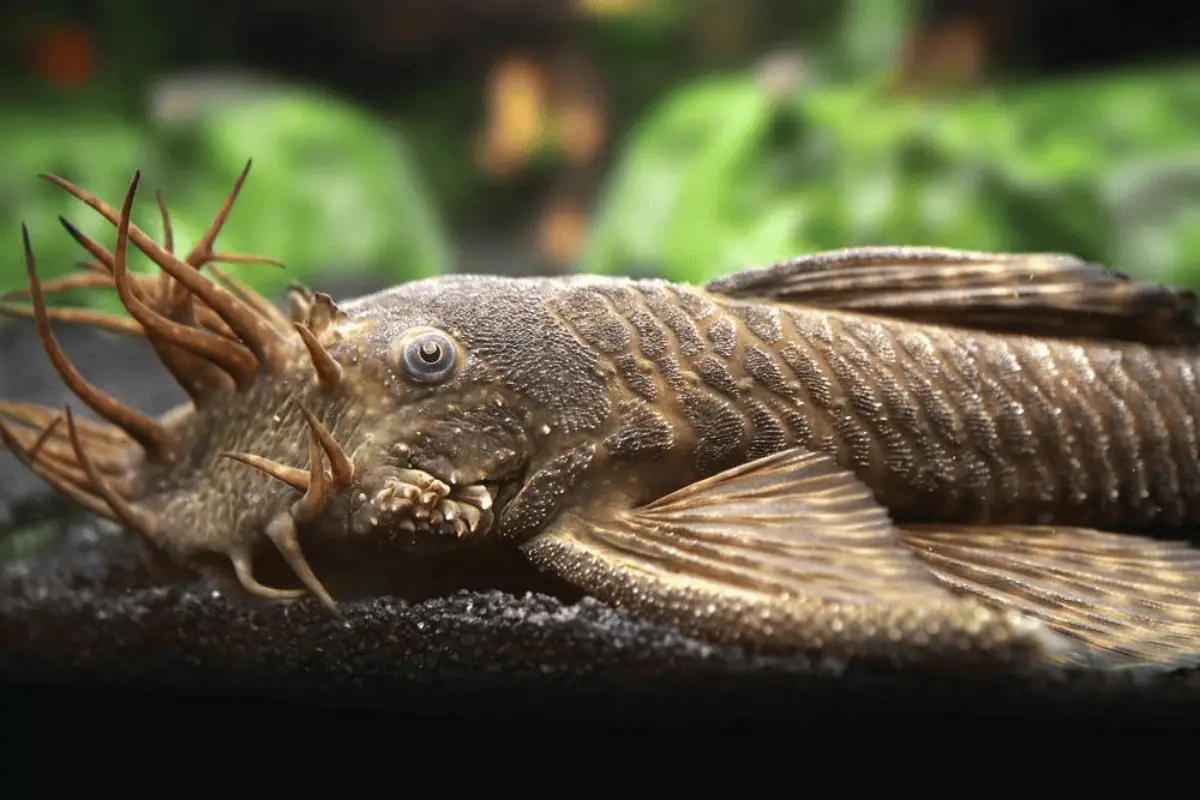
Growing to an average size of 4-6 inches, these Plecos from South America are notable for their distinctive bristles.
Care includes a diet of algae, supplemented with wafers and vegetables, and ensuring they have ample hiding spaces with driftwood.
2. Clown Pleco (Panaqolus maccus)
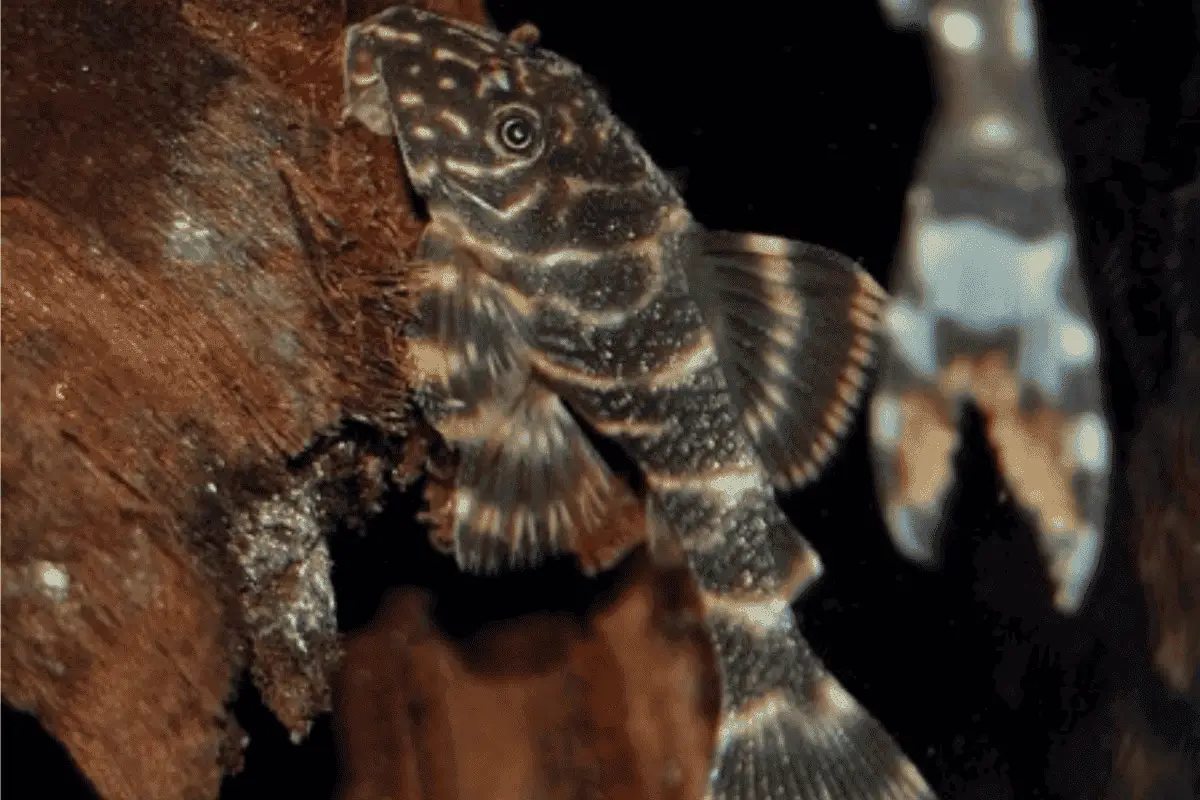
A compact species from Venezuela, they reach sizes of about 3-4 inches. They require driftwood for both shelter and food, and they occasionally appreciate a meaty diet.
3. Rubber Lip Pleco (Chaetostoma formosae)

These Plecos, native to the Andes’ streams, grow up to 7 inches. They favor a strong current with various hiding spots and predominantly eat plants, with occasional protein.
4. Dwarf Pleco (Hypostomus plecostomus)

A misleading name, as they can grow up to 24 inches in the wild. Ensure the tank is spacious and offer them a varied diet.
5. Pitbull Pleco (Parotocinclus jumbo)

Small and active, they reach an average size of 2-3 inches. Care includes clean water and a varied diet of algae wafers, vegetables, and occasional protein.
6. Bulldog Pleco (Chaetostoma miles)

Native to Colombian waters, they grow up to 4 inches. They benefit from a tank current and an algae-based diet.
7. Medusa Pleco (Ancistrus ranunculus)

This unique Pleco grows up to 5 inches and has tentacle-like snout growths. It thrives on driftwood in their diet and a mix of protein and vegetation.
8. Butterfly Pleco (Dekeyseria pulchra)

Reaching sizes up to 6 inches, this Pleco from the Amazon Basin is a wood grazer. Ensure driftwood is present in their tank for feeding and shelter.
9. Spotted Rubber Pleco (Parancistrus nudiventris)
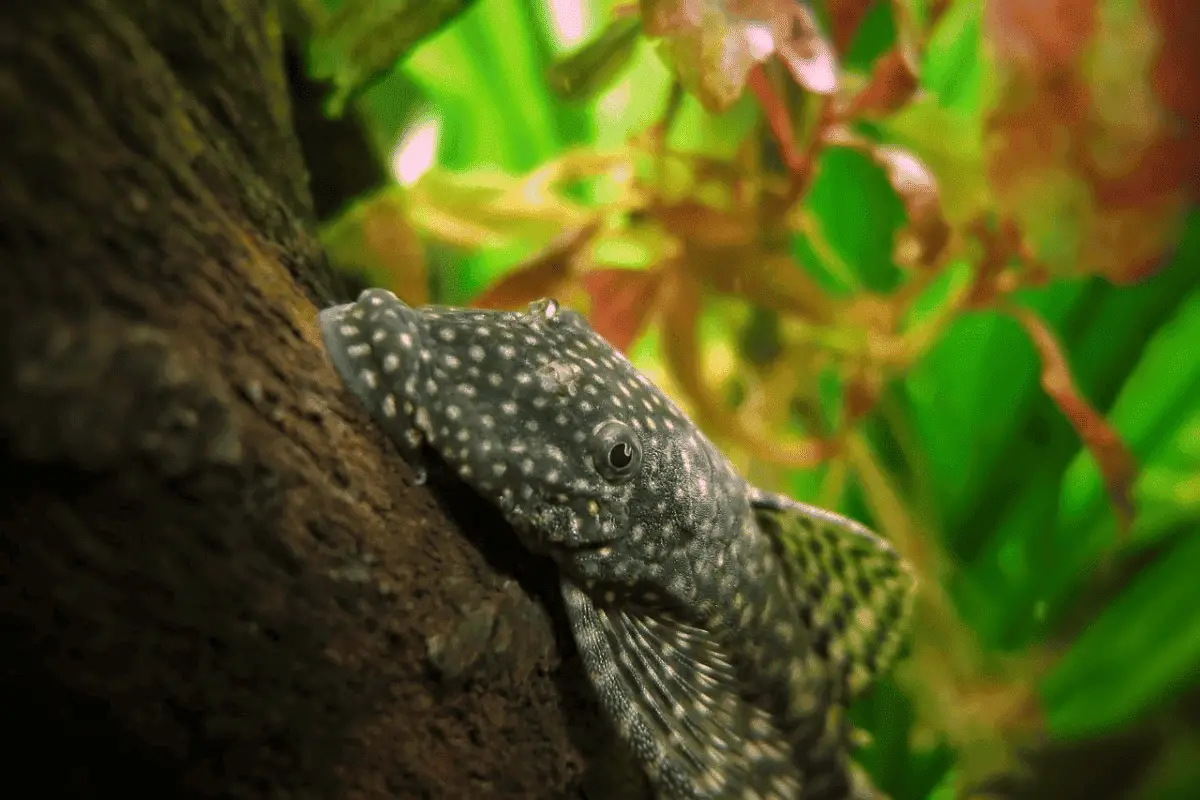
A larger Pleco, they can grow up to 12 inches and come from Brazil’s Rio Xingu. Offer them a balanced diet of plant and meat-based foods.
10. Emperor Pleco (Peckoltia vittata)
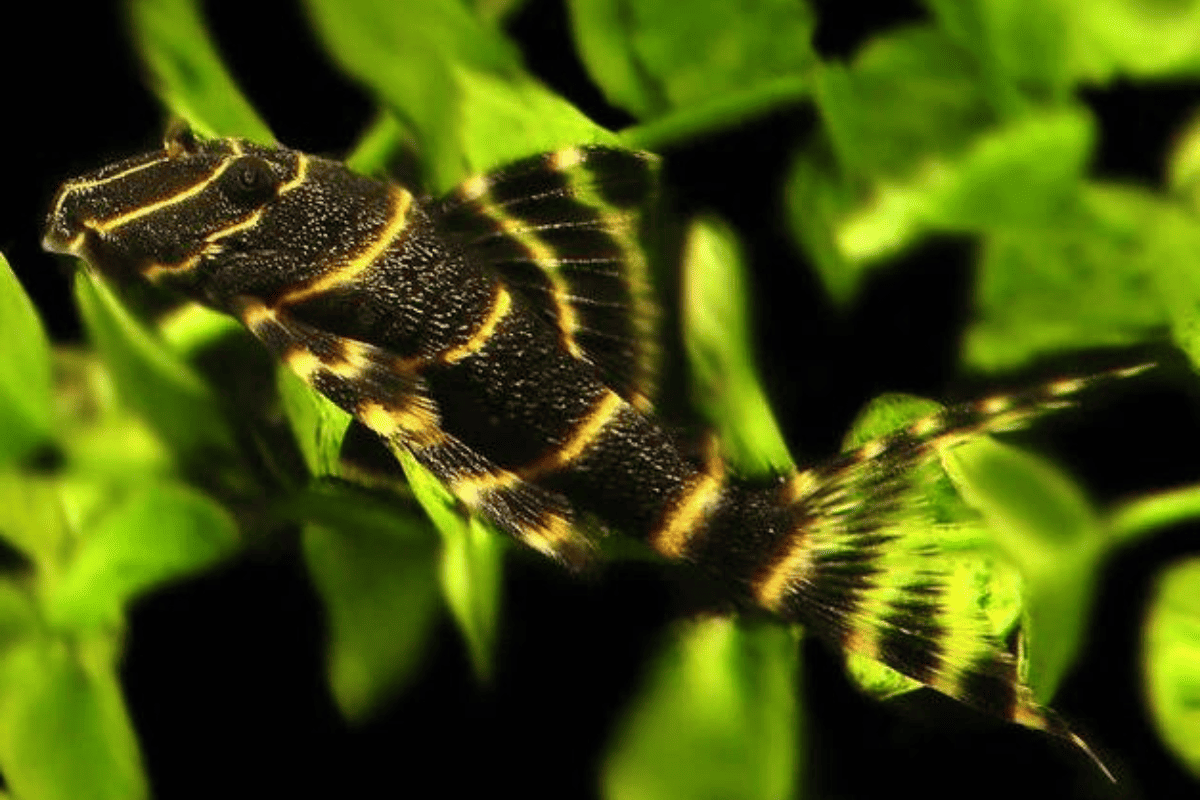
Found in Brazil, they grow to about 10 inches. They’re nocturnal and prefer a varied diet, along with hiding spots.
11. Golden Nugget Pleco (Baryancistrus xanthellus)

A larger variety, they can reach 8-10 inches and are from Brazil’s Rio Xingu. Ensure clean water, wood to gnaw on, and a diet rich in protein and vegetables.
12. Queen Arabesque Pleco (Hypancistrus debilittera)

These Plecos, known for intricate patterns, grow to about 3-4 inches. Offer them high-quality pellets, frozen food, and occasional live food.
13. Zebra Pleco (Hypancistrus zebra)
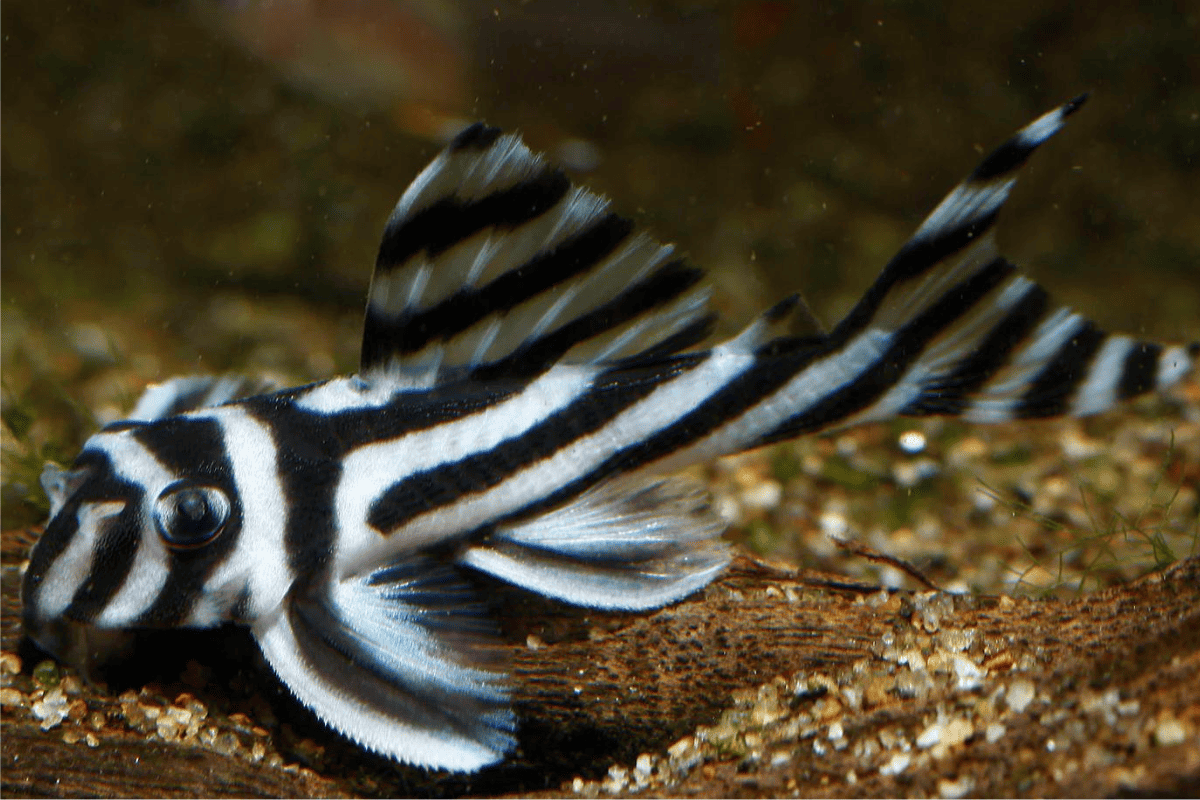
Growing up to 3-4 inches, their black and white stripes are distinctive. They’re carnivorous and require meaty foods and good water quality.
14. Candy Striped Pleco (Peckoltia vittata)

Native to the Amazon, they grow up to 5 inches. They thrive on varied diets, including algae wafers, blanched vegetables, and occasional protein.
15. Peppermint Pleco (Parancistrus nudiventris)

Growing to about 7 inches, they come from Brazil’s Rio Xingu. Offer them a balanced diet of both plant and meat-based foods.
How Many Plecos Can You Put in a 30-Gallon Tank?
In a 30-gallon tank, you should ideally keep only one adult Pleco, especially if it’s one of the larger species.
If you’re considering smaller Plecos, such as the Clown or Bristlenose, you might be able to house two, but always monitor for territorial behavior.
- Tank Size Matters: Plecos are active swimmers and need plenty of space. A 30-gallon tank can comfortably support one adult Pleco or two smaller species.
- Rule of Thumb: For every inch of Pleco, you’ll want at least 3-5 gallons of water. Hence, a 4-inch Bristlenose Pleco would require 12-20 gallons as a guideline.
- Territorial Tendencies: Plecos can be territorial, especially males. Overcrowding can lead to stress, aggression, and poor health.
- Bioload Consideration: Plecos produce a significant amount of waste. Overpopulating with multiple Plecos can lead to water quality issues and increased maintenance.
- Variety-Specific Needs: Different Pleco species have varying requirements. Before adding multiple Plecos, research their specific needs, ensuring the tank can cater to all inhabitants.

What Is the Recommended Tank Size for Plecos?
The recommended tank size for Plecos largely depends on their species.
While some can thrive in a 30-gallon tank, others, particularly larger species, necessitate over 100-gallon setups.
- Species Size Variation: Plecos vary in size from 3 inches to 2 feet. Your tank choice should correlate with their potential adult size.
- Swimming and Territory: Plecos need space both for mobility and territory. Cramped quarters can induce stress and incite conflicts.
- Bioload Considerations: Larger Plecos excrete more waste. Suitable tank dimensions ensure effective waste management and cleaner water.
Given these considerations, here’s a table outlining some popular Pleco species and their recommended tank sizes:
| Pleco Species | Recommended Tank Size |
| Clown Pleco (Panaqolus maccus) | 20-30 gallons |
| Bristlenose Pleco (Ancistrus sp.) | 30 gallons |
| Pitbull Pleco (Parotocinclus jumbo) | 30 gallons |
| Rubber Lip Pleco (Chaetostoma formosae) | 30-40 gallons |
| Bulldog Pleco (Chaetostoma milesi) | 40 gallons |
| Butterfly Pleco (Dekeyseria pulchra) | 50 gallons |
| Candy Striped Pleco (Peckoltia vittata) | 50-60 gallons |
| Peppermint Pleco (Parancistrus nudiventris) | 60 gallons |
| Medusa Pleco (Ancistrus ranunculus) | 60-70 gallons |
| Golden Nugget Pleco (Baryancistrus xanthellus) | 70 gallons |
| Queen Arabesque Pleco (Hypancistrus debilittera) | 80 gallons |
| Emperor Pleco (Peckoltia vittata) | 80-90 gallons |
| Zebra Pleco (Hypancistrus zebra) | 90 gallons |
| Spotted Rubber Pleco (Parancistrus nudiventris) | 100 gallons |
| Sailfin Pleco (Pterygoplichthys gibbiceps) | 125 gallons |
| Royal Pleco (Panaque nigrolineatus) | 125-150 gallons |
| Blue-eyed Pleco (Panaque cochliodon) | 150 gallons |
| Vampire Pleco (Leporacanthicus galaxias) | 150 gallons |
| Tiger Pleco (Peckoltia vermiculata) | 150-180 gallons |
| Common Pleco (Hypostomus plecostomus) | 180+ gallons |
Also Read: Pleco Fish Tank Size
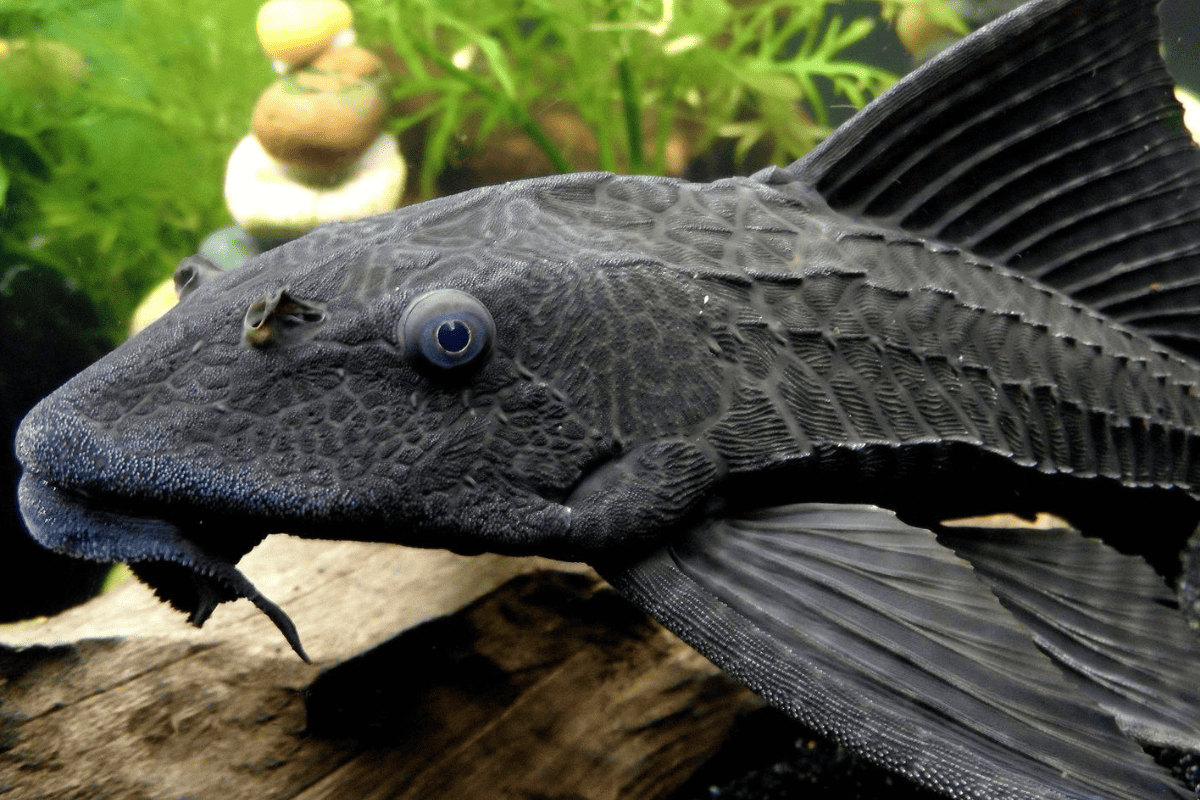
How Big Will a Pleco Get in a 30-Gallon Tank?
A Pleco’s growth in a 30-gallon tank can be somewhat limited by its environment, but it primarily depends on its species.
While some smaller Plecos might reach their full size in such a tank, larger species will be stunted and can suffer health issues.
- Natural Growth Patterns: Plecos, like all fish, have a natural growth potential. For instance, a Bristlenose Pleco might max out at 6 inches, fitting a 30-gallon tank well.
- Tank Limitation Myths: Contrary to some beliefs, tanks don’t “grow” fish. Larger Plecos in small tanks will experience stunted growth and health problems.
- Space and Health: Plecos need space for proper muscle development. Cramped conditions can result in deformities and weak fish.
- Stress and Lifespan: Stress from limited space can reduce a Pleco’s lifespan. For instance, a Common Pleco in a 30-gallon tank might not reach its usual age or size potential.
- Species Matters: Always research the species. A Clown Pleco will comfortably reach its 3-4 inch size in a 30-gallon tank, but larger species won’t.
Also Read: Which Plecos Can Live In 20 Gallons?
Can Plecos Breed in a 30-Gallon Tank?
Yes, certain species of Plecos can breed in a 30-gallon tank.
However, successful breeding often requires careful consideration of the tank environment and ensuring optimal conditions for both the parents and the offspring.
- Species Specifics: Smaller Plecos, like the Bristlenose or Clown Pleco, can breed in a 30-gallon setting, but larger species might find it cramped, affecting their breeding behaviors.
- Environmental Conditions: Plecos need specific conditions to trigger spawning, including appropriate hiding spots, water parameters, and diet. In a 30-gallon tank, replicating these conditions might be challenging but not impossible.
- Space for Offspring: While breeding might occur, ensuring the offspring’s survival requires space, clean water, and suitable food. A 30-gallon tank can become crowded quickly, affecting the well-being of the fry.
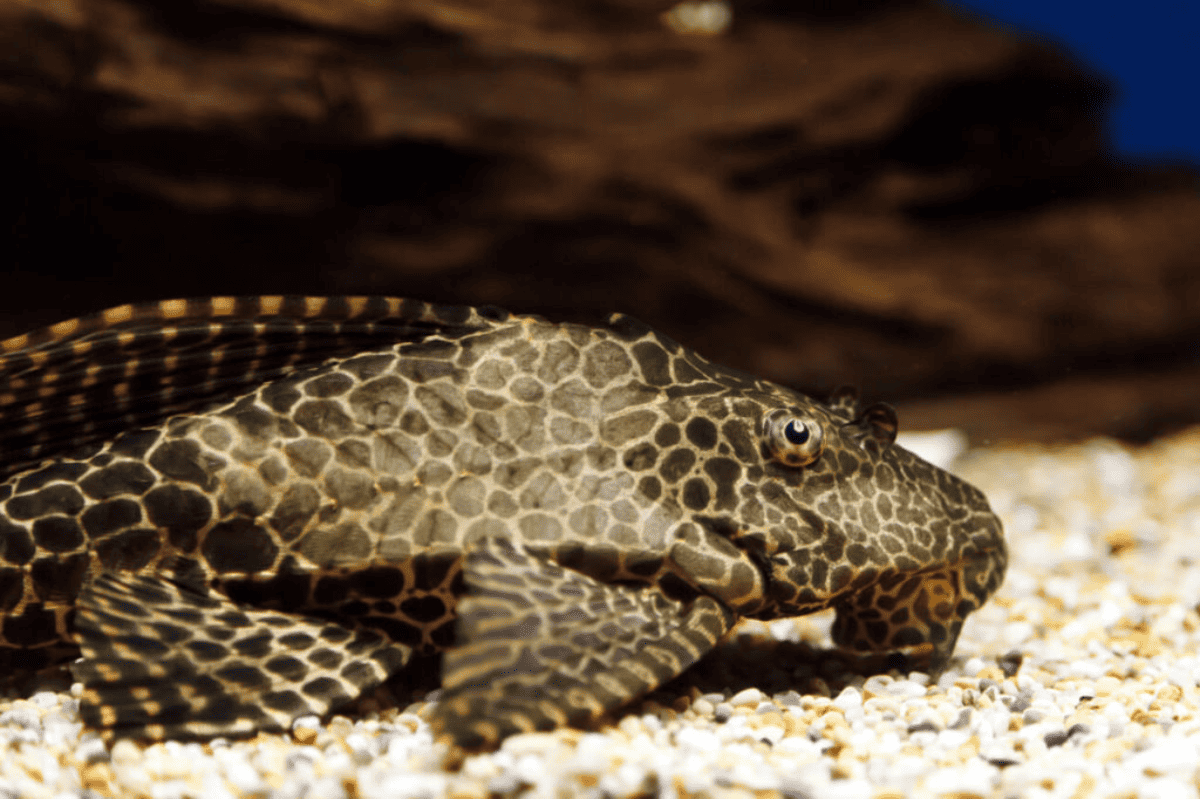
What Is the Largest Pleco You Can Get for a 30-Gallon Tank?
The largest Pleco suitable for a 30-gallon tank would be one that grows to about 6 inches in length, like the Bristlenose Pleco.
Going beyond this size can compromise the well-being of the fish and the overall health of the tank.
- Size-to-Tank Ratio: Ideally, for every inch of Pleco, you’d want 3-5 gallons of water. A 6-inch Pleco, therefore, would need around 18-30 gallons of space.
- Movement and Comfort: Plecos are active bottom dwellers. They require ample space to forage, explore, and establish territories without feeling cramped.
- Waste Management: Larger Plecos produce more waste, which can strain the tank’s filtration. A 30-gallon tank’s bioload can quickly max out with an oversized Pleco.
- Species Consideration: Some Plecos, even if smaller, might be more active or aggressive. Research the specific species to ensure it’s a good fit for a 30-gallon setup.
Tips for Keeping Plecos in a 30-Gallon Tank
Keeping Plecos in a 30-gallon tank requires keen attention to detail and an understanding of their habits.
It’s not merely about the tank size; it’s about creating a comfortable, stimulating environment for them.
- Right Species Selection: Stick to smaller Pleco species, such as the Bristlenose (which typically grows to about 4-6 inches) or the Clown Pleco (around 3-4 inches). These species will thrive without quickly outgrowing a 30-gallon setup.
- Effective Filtration: Plecos are known for their hefty waste output. Investing in a filter rated for a tank larger than 30 gallons, like a 40 or 50-gallon filter, can ensure efficient waste management.
- Dietary Requirements: Though Plecos eat algae, it shouldn’t be their sole diet. Supplement with algae wafers, blanched vegetables (like zucchini or peas), and occasional protein-based foods.
- Hiding Places: Provide multiple hiding spots using caves, driftwood, or PVC pipes. Plecos are nocturnal and appreciate dark places to rest during the day. My Pleco absolutely loves the Jabukosu 2 PCS Aquarium Cave (link to Amazon).
- Regular Water Changes: Replace 25-30% of the tank water bi-weekly. This helps in keeping the water parameters stable, crucial for Pleco health.
- Avoid Overcrowding: In a 30-gallon tank, it’s easy to overstock. Limit the number of tankmates and consider their size and bioload too.
- Monitor Water Parameters: Regularly test the water for ammonia, nitrites, nitrates, and pH. Plecos prefer a pH of 6.5-7.5 and any ammonia or nitrite should be at zero. For that, I use the API FRESHWATER MASTER TEST (link to Amazon).
Also Read: Plecos In A 40-Gallon Tank

Conclusions
For those of you in a rush, here’s a short summary:
- Selecting the right Plecos for a 30-gallon tank is crucial, focusing on smaller, less aggressive species with calm temperaments, suitable dietary needs, and proper environmental requirements.
- It’s recommended to keep only one adult Pleco in a 30-gallon tank, or two smaller species like Clown or Bristlenose Plecos, to avoid territorial issues and bioload problems.
- The recommended tank size for Plecos varies depending on their species, with larger species needing over 100-gallon setups while smaller ones can thrive in 30 gallons.
- Plecos’ growth in a 30-gallon tank depends on their species, and larger species can suffer from stunted growth and health issues in such limited space.
- Breeding Plecos in a 30-gallon tank is possible for smaller species like Bristlenose or Clown Plecos, but maintaining optimal conditions for both breeding and offspring can be challenging due to limited space.

